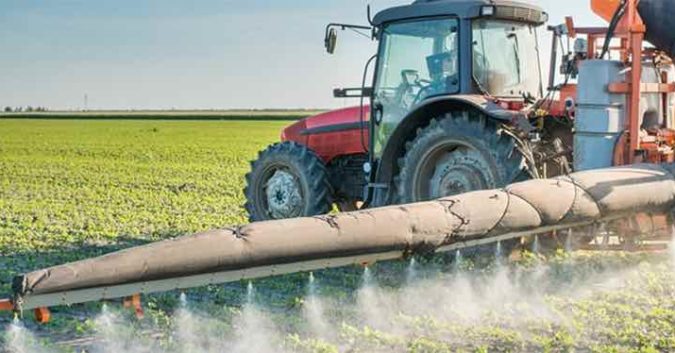After paying $289 Million in damages to a man who developed cancer from using its bestselling weed killer Roundup, Monsanto (now owned by Bayer) would have been wise to rethink the safety of the product’s active ingredient, glyphosate.
Call (800) 995-1212 or Get a Free Glyphosate Roundup Case Review today.
Get a Free Glyphosate Roundup® Case Review
Instead, the self-proclaimed leader in genetic engineering was still in denial.
“Glyphosate has a 40-year history of safe and effective use. The overwhelming conclusion of experts worldwide … has been that glyphosate can be used safely,” Monsanto said, apparently ignorant of evidence building against the chemical.
In reality, glyphosate cannot be defined as “safe” by any stretch of the imagination. Besides the fact it kills most plants, glyphosate is “probably carcinogenic to humans,” according to International Agency for Research on Cancer (IARC) findings from 2015.
Since then, test after independent test — the latest from the Environmental Working Group (EWG) — has found dangerous levels of glyphosate in everyday American foods.
And what’s worse? Many of them are made by brands we consider “healthy.”
What Is Glyphosate and Why Is It So Dangerous?
Glyphosate has been used as an herbicide to regulate plant growth. First registered for use in the U.S. in 1974, it’s now the most widely used in farms and gardens across the country and sold in more than 750 products.
Used in food crops, glyphosate can be found virtually everywhere in the food chain. And concerns over the link between glyphosate toxicity and cancer are on the rise.
The link to Non-Hodgkin’s lymphoma is particularly strong. One study asserts that exposure to glyphosate triples the risk of a subtype of the disease called small lymphocytic lymphoma. In another study, participants who used 5 or more of 9 pesticides tested were twice as likely to develop Non-Hodgkin’s lymphoma.
Glyphosate has also been associated with a host of other health issues, including liver damage, kidney disease, reproductive problems, and birth defects.
And its damage to plants matters more than we think. Not only does glyphosate interfere with plants’ ability to absorb nutrients from soil, but it also acts as an antibiotic that kills certain good bacteria — critical to the health of both soil and our digestive system.
Sadly, the common alternative to glyphosate is paraquat, a similarly dangerous and potentially toxic herbicide and weed killer.
It’s time to pay closer attention to what we eat.
Glyphosate Products to Avoid
As well as EWG, a handful of NGOs like Moms Across America, Food Democracy Now!, and The Detox Project have tested a variety of products for glyphosate. Based on their reports, here are just a few types of foods and examples of brands that have tested positive:
- Granola by Quaker, KIND, Back to Nature, Nature Valley
- Instant oats by Giant, Quaker, Umpqua, Market Pantry
- Whole oats by Quaker, Bob’s Red Mill, Nature’s Path, Whole Foods
- Cereal by Kashi, Kellogg’s, including Lucky Charms and Cheerios
- Snack bars by Quaker, KIND, Nature Valley, Kellogg’s
- Orange juice by Tropicana, Minute Maid, Signature Farms, Kirkland
- Crackers, including Cheez-Its, Ritz, Triscuits, Goldfish
- Cookies by Annie’s, Kashi, and Nabisco (Oreos)
- Chips by Stacy’s, Lay’s, Doritos, Fritos
Glyphosate has also been found in miscellaneous products like:
- Ben & Jerry’s ice cream
- Non-organic cotton products like tampons and clothing
- Even drinking water
It’s been found in 75% of air and rain samples. According to a 2017 study, it’s regularly found in human urine.
Perhaps most discouraging are new findings on glyphosate in organic foods. Although decades’ worth of evidence supports the idea that organic foods contain lower (or trace) levels of pesticide than conventional foods, the latest tests show the levels are virtually the same.
How Do You Avoid Glyphosate Exposure?
Glyphosate contamination is rampant because, when airborne, the chemical can travel far. But it does not pass easily through the skin. The real concern is exposure through the eyes, nose, or mouth. We can’t do much about what’s in the air, but we can control ingestion.
To avoid glyphosate poisoning, here are some of the things you can do:
- Look for labels. The Detox Project, which uses an FDA-registered food testing lab to test for toxic chemicals, recently launched a “Glyphosate Residue Free” label that companies can apply for to certify their products. Until it rolls out more widely, you are more likely (but not guaranteed) to avoid exposure by opting for foods labeled “Certified Organic.”
- Grow your own. There are many health and environmental benefits to growing your own plants, herbs, vegetables, and fruits. If you don’t have time, source local produce from a farmer’s market you trust.
- Avoid using weed killer. When in doubt, avoid the use of weed killers that use the active ingredient glyphosate. If, however, you do encounter the substance, always wash your hands and/or body afterward. If you get any glyphosate on your skin or in your eyes, nose, or throat, follow the product’s First Aid instructions or call the Poison Control Center.
If you notice persistent symptoms, such as nausea, vomiting, diarrhea, or irritation in the mouth or throat, you need to see a doctor immediately. From there, you have the right to hold the pesticide manufacturer accountable for the harm.
No matter what Monsanto wants us to believe, the evidence for long-term health concerns from glyphosate exposure is too strong to take any chances.
Find a more comprehensive list of the products and brands that use glyphosate or general information on glyphosate in the National Pesticide Information Center's fact sheet.
